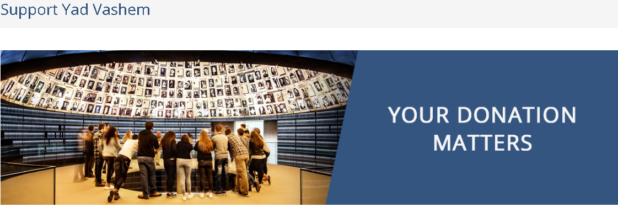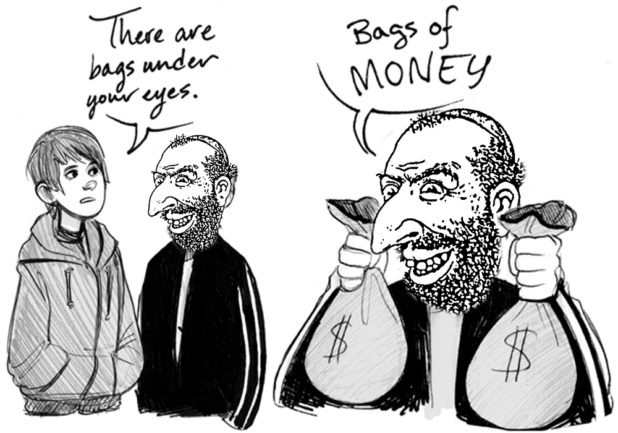Diversity Macht Frei
February 17, 2019
Yad Vashem is the central Holocaust memorial in Israel. Every foreign dignitary who visits the country has to go there and pay ritual homage.
Most people naturally assume that the memorial emerged as part of that culture of post-war commemoration that has put Holocaust museums in almost every major American city and now Europe, too, where even supposedly “far-right” governments such as those of Hungary, Poland and Austria agree to set up Holocult monuments or institutions as a kind of capitulation to Jewish power.
Few know that Jews were already planning to cash in on the Holocaust while the war was still going on, indeed only months after the “Final Solution” had supposedly begun.
According to mainstream history, the “Holocaust” was decided on at the Wannsee conference in January, 1942. By September 1942, Mordecai Shenhabi, a Jew living in Palestine (then a British mandate territory, Israel did not yet exist), was coming up with schemes for how he, other Jews, and the future state of Israel could profit from the event.
When Mordecai Shenhabi presented the Jewish National Fund with his first proposal for a memorial to the victims of the Nazis, he made his case in a practical tone: “The Jewish National Fund needs a new cause that can turn into a pipeline for large sums,” he wrote. He supposed that the money would come in the form of contributions from wealthy Jews overseas, but he also project an income from the memorial activities themselves. People who wished to memorialize their loved ones could plant trees in a special grove, for a price, and could buy memorial certificates and specially designed stone monuments to be erected anywhere in the world where Jews are buried. The expected income would fund immigrant absorption and Zionist settment, Shenhabi wrote, as early as 1942*. The extermination of the Jews had just begun.
The Yad Vashem proposal included an ideological manifesto, an estimated budget, and an architectural sketch of a tall tower on the top of a hill. Around the tower, Shenhabi imagined a “people’s park” that would spread over thousands of acres and contain not only a central Memorial Sanctuary to preserve the names of the victims, a Sanctuary of Battle (Heroism), Holocaust historical museums and archives, but also research institutes devoted to the history of Zionism, a large conference center, hotels, a youth hostel, restaurants, sports facilities, including a stadium, and a cemetery. No tourist would be able to avoid visiting the complex.
The “monumental” Memorial Sanctuary would point an accusing finger at the non-Jewish world, which offered the Jews “as prey to the enemy’s jaws,” Shenhabi wrote, and it would teach the lesson of “a thousand years of trying to live in countries that are not ours.”
Source: “The Seventh Million” by Tom Segev
*The footnote in the book says 10 September 1942.
The Jewish National Fund initially had other plans, however. It wanted to generate cash for itself: by selling memorial trees.
The JNF discussed the plan several more times during the war but displayed no urgency in carrying it out. Instead, beginning in 1942, it put together its own, competing memorial program. The Martyrs’ Forest, in the Jerusalem mountains, was a threat to Yad Vashem, since “memorial huts” were to be scattered among the trees, where visitors could commune with the memory of the victims. Shenhabi claimed that the JNF planned the forest secretly behind his back. “What, after all this, remains of the central memorial project?” he asked angrily when the JNF began to distribute, in Palestine and throughout the world, colorful pamphlets soliciting the purchase of trees for the new forest. Shenhabi saw it as a “cruel curtailment” of his project. Only with great effort did he succeed in persuading the JNF to do without the memorial huts; it would not, however, cancel the plans for the forest itself. The leaders of the JNF did not make any secret of what had motivated them to initiate the project: “It was the very last opportunity to score any kind of financial success,” one of the heads of the fund explained.
After the war, a Jew called Schneurson planned to set up a Holocaust memorial in Paris. Shenhabi and the Israeli government somehow saw this is a monstrous threat to their monopoly of the Holocaust narrative and the power it had to generate raw cash.
The prime minister ordered Israel’s ambassadors to “take every step” necessary to terminate the Schneurson plan; the foreign ministry sent out its orders in top-secret cables. Ultimately the government reach an agreement with Schneurson: Yad Cashem was recognized as the central Holocaust memorial project, with the exclusive right to register the names of victims. …Yad Vashem agreed to recommend to the Claims Conference of the Jewish organizations that the Paris project be given a lump sum of $500,000 to build a monument, for which the Paris project would relinquish the right to conduct any sort of fund-raising campaign in the future. The money would come from German reparations payments. Yad Vashem asked the foreign ministry to tell its diplomats to keep their eyes peeled and to ascertain that Schneurson did not attempt any fund-raising of his own; if he did, Yad Vashem threatened “open war” against him.
Shenhabi also came up with another ingenious expedient to cash in on the “Holocaust”.
Beginning in 1950, Shenhabi also floated another idea aimed at ensuring Israel’s monopoly on the Holocaust: a special law that should state that every Holocaust victim became, at his death, an Israel citizen. …The JNF’s legal counsel asserted that granting citizenship to the Holocaust’s victims could help the Israeli government claim the property of those victims who left no heirs.
This plan to grant Israel citizenship posthumously was later abandoned because of practical difficulties in implementation; but was ultimately given effect in 1985.
The mercenary intent behind it – that of laying a kind of racial claim to the property of Jews who died without heirs – is one that Jews are still pursuing, however.
Only this week American government officials, including Mike Pompeo, have been trying to strong-arm the Poles into submitting to Jewish demands. Some of these demands are embodied in the Terezin declaration, which states:
“heirless property could serve as a basis for addressing the material necessities of needy Holocaust (Shoah) survivors.”
In other words, when a Jew died without heirs, their property should be handed over to the tribe for distribution to other members of the tribe. It is astonishing to find this concept of racial ownership still being expounded in the modern world.
All in all, you really have to admire the indomitable chutzpah of the Jews and their creative, entrepreneurial spirit. Even as war was raging, they were planning the post-war cash-in; building a narrative, and a means of theatricalising that narrative, that they knew would generate constant cash returns long into the future.
 Daily Stormer The Most Censored Publication in History
Daily Stormer The Most Censored Publication in History





